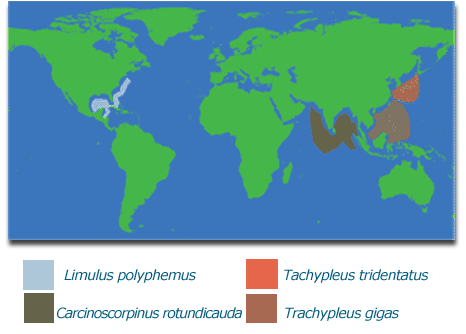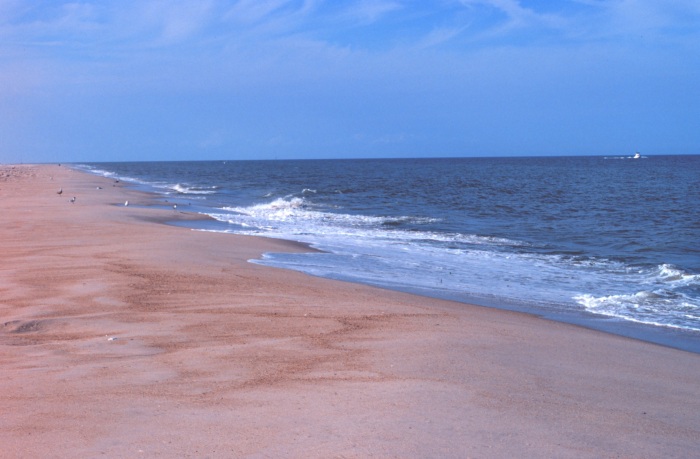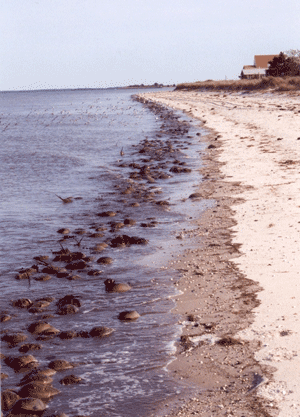Where's the Horseshoe?
General Habitat and Distribution
The Limulus polyphemus
populations are distributed alongside the
northern coast of the Atlantic Ocean between
Georgia and New York. There are also smaller populations along
the Gulf of Mexico. The green sea turtle
also lives in the Gulf of Mexico! To
learn more click
here! The most popular area for the
horseshoe crabs is in the Delaware Bay. They
are mainly found in shallow waters with soft
ocean floors. The habitat for
horseshoe crabs depends on what stage it is in, whether
the horseshoe crab is spawning,
breeding, or just growing to maturity.
At each point in its life, the waters and
substrates are important factors. Multiple organisms live in its
habitat including numerous species of
shorebirds, fish including striped bass,
white perch American eel, weakfish,
silversides, summer and winter flounders,
sea turtles, many gastropods, sponges, mud
crabs and sand shrimp, bivalves, flatworms,
snails and many more!

This is a map that illustrates the distribution of not only the Limulus polyphemus but the three other species of horseshoe crabs. Our focus is along the Atlantic coast as well as within the Gulf of Mexico.
Spawning Habitat
Sandy beaches of bays and coves are the
preferred habitat for spawning horseshoe
crabs. The environment for the egg
needs to have porous, well-oxygenated sediments .
They lay their eggs in the sand and the
survival of the eggs is dependant upon the
beach. This is also where their
offspring will grow and develop. These areas
are favored because they are sheltered from
the wave energy and the habitat is generally near
places of large intertidal sandy flat areas.
.
They lay their eggs in the sand and the
survival of the eggs is dependant upon the
beach. This is also where their
offspring will grow and develop. These areas
are favored because they are sheltered from
the wave energy and the habitat is generally near
places of large intertidal sandy flat areas.
Delaware Seashore State Park.
Photographer: Mr. William Folsom, NOAA, NMFS
Nursery Habitat
Within bays and coves, next to the sandy beaches, are intertidal sand flats. The young horseshoe crab generally spends the first two years of its life here. The water is shallow, food is sufficient, and has their preferred salinity of the water around 5 ppt (parts per thousand). As the horseshoe crabs age, they maneuver out of the shallow areas to deeper parts of the bay. They will not come back to the beaches until they are fully grown into an adult.
Adult Habitat
The adult habitat varies. Their preferred habitat has not been determined. They have been found below 200 meters of water as well as shallower depths of 30 meters. Through the duration of spawning season, the adults who are not spawning move to adjacent beaches.
Winter Habitat
During the winter season the horseshoe crabs will move into the ocean or stay located in the bay.
Horseshoe Crabs spawning
on a Delaware beach.
Photo by Greg Breese, USFWS.
Horseshoe crabs have been part of this planet for an estimated 500 million years! To learn about how it adapts to its environment click here!
To go back to the classification page click here!
